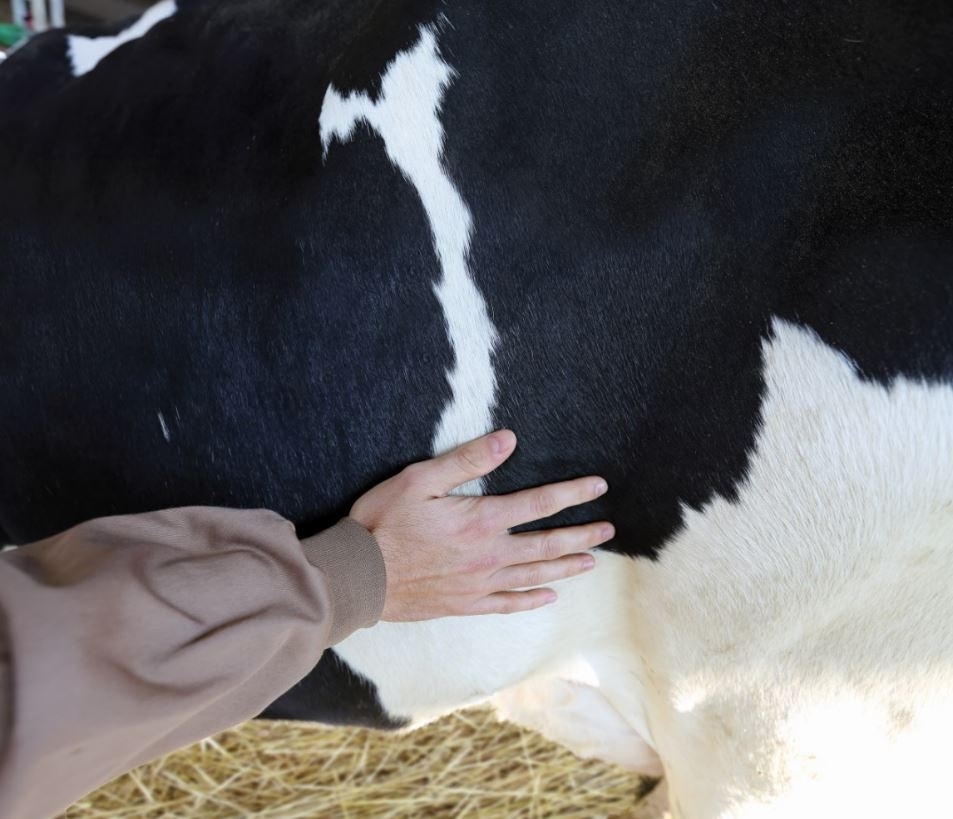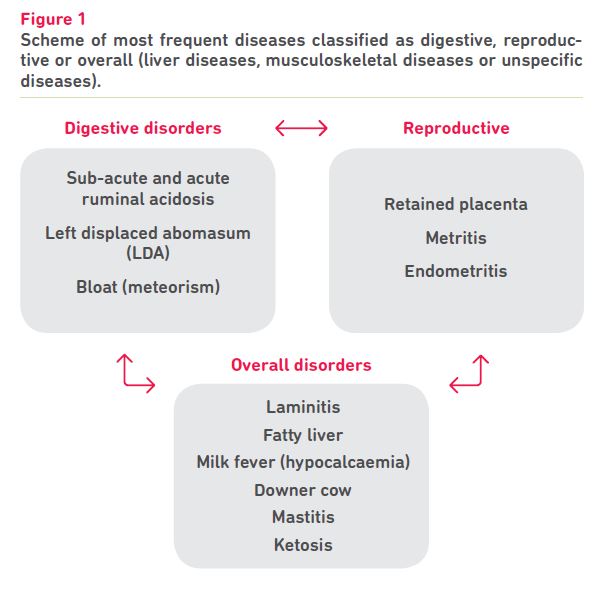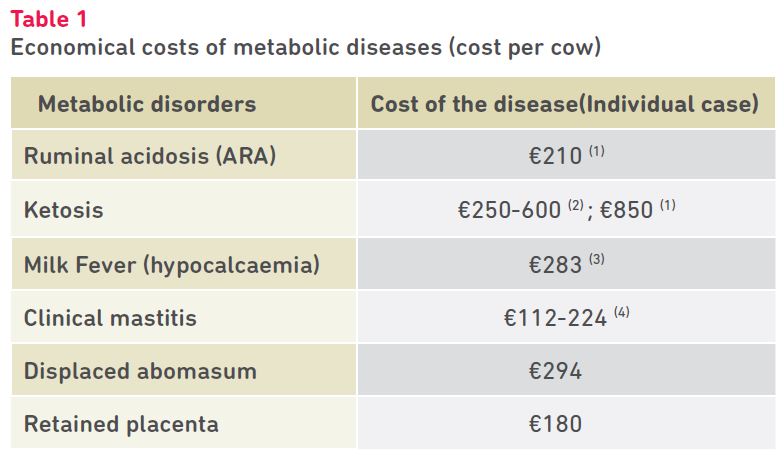View products for cattle
E-learning platform for vets specialised in cattle
Learn more about Respiratory diseases in cattle
Learn more about Pain management in cattle
Learn more about Transition period in cattle
Metabolic diseases in dairy cattle
Metabolic diseases are very frequent in dairy herds, 45 to 60% of dairy cows, despite their milk production, develop metabolic diseases during the transition period that occurs within peripartum period and is prolonged during the first weeks of lactation.
During this period of time, there are multiple changes happening, that represents a metabolic challenge for the cow:
- hormonal changes
- moving from non-lactating to lactating state
- a major drop in feed intake
- a switch of the diet from a roughage-based diet (i.e. hay and grass) into a diet rich in rapidly fermentable carbohydrates (i.e. high-grain diets).

Different metabolic disorders are highly related with each other, especially if there exists a systemic affection, which means that the apparition of a metabolic disease usually triggers the presence of other ones. (1)

Economic losses occur in all of these diseases as a result of decreased milk production, decreased efficiency of milk production, premature culling, veterinarian costs, reduced fertility and death in serious cases. (2)
Ketosis is one of the costliest metabolic disorders.

Ketosis commonly results either from the lack of sufficient glucose precursors available for energy production or from a reduced gluconeogenic capacity of the liver.
This low concentration of glucose in plasma during negative energy balance (NEB) forces to an excessive lipid mobilization and increased blood levels of non-esterified fatty acids (NEFAs) which produces ketone bodies after its inefficient metabolization. (5,6)
An early measurement of ketone bodies (such as beta-hydroxybutyrate; BHB) as well as a good supportive management consisting in providing not only glucose precursors but also boost of energy (as phosphorus supply), are essential for a good recovery of the cows into their normal energetic balance and their normal performance.
LIVISTO offers a wide range portfolio of metabolic solutions to assure the restoration of the energetic balance of the cows and provide them vitamin supplements to cover the deficiencies. Check with your distributor which LIVISTO products are approved in your area.
BIBLIOGRAPHY
- 1. Burim, A. Metabolic disorders of Dairy Cattle. Vet. Sci. (2006).
- 2. Roemen, J. & Daandels, Y. Best practice guide on metabolic diseases in European dairy farms and the use of technology to detect metabolic diseases. Data Driven Dairy Decis. Farners 2–6 (2017).
- 3. Halleron, R. Metabolic disorders affect 30% dairy cows. Agri-Bussiness 456 (2014).
- 4. Blowey, R. & Edmondson, P. Mastitis Control in Dairy Herds. CAB International (2010).
- 5. Pereira, R. A. et al. Metabolic parameters and dry matter intake of ewes treated with butaphosphan and cyanocobalamin in the early postpartum period. Small Rumin. Res. 114, 140–145 (2013).
- 6. Rollin, E., Berghaus, R. D., Rapnicki, P., Godden, S. M. & Overton, M. W. The effect of injectable butaphosphan and cyanocobalamin on postpartum serum beta-hydroxybutyrate, calcium, and phosphorus concentrations in dairy cattle. J. Dairy Sci. 93, 978–87 (2010).
